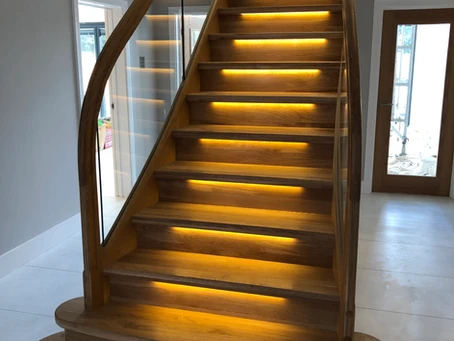
Why do Vonka Stairs choose hardwood? Types of timber.
One of the most important factors to consider when choosing a staircase is the type of material. There is a multitude of choices and combinations, each comes with some pros and cons. The most traditional staircase constructions are made of timber. Wood is being identified as a key constituent in a group of materials used in the architectural industry.
The term „timber” enclose materials from a large group of different species. Each of them is characterized by different performance features. Timber is classified as hardwood or softwood depending on the seed the tree produces. They also differ in appearance, density and workability.
What's the difference?
Hardwood comes from trees known as angiosperms, which produce seeds that are covered with a shell or skin. Softwood comes from trees known as gymnosperms, which produce seeds that don't have any covering. Another difference lies in the fact that angiosperm (deciduous) trees shed their leaves in the winter months meanwhile gymnosperms (evergreens) remain green all year.
Hardwood properties
Hardwoods are more expensive due to their better density and tough workability. They also have a slower growth rate and better fire resistance. Not only great strength and durability should be mentioned, but also fact that its colours and finishes can suit almost any style setting. Any scratches or dents can be easily fixed, as they are easy to maintain.
Hardwood can bring incredible warmth and character to your property. They’re mostly found in high-quality workpieces. Not all hardwoods are the same; some of them have bigger densities than others, which makes them better suited to certain applications. They’re used when durability and strength are of utmost importance.
Common types of hardwoods: oak, teak, ash, beech, walnut.
Softwood properties
Softwoods are cheaper, easily manipulated and readily available. They are less dense than hardwoods, have a shorter service life, require more care and maintenance over their lifespan. But on the other hand, they’re more flexible, lighter in weight and cheaper.
Common types of softwoods: pine, cedar, redwood, douglas fir.
Why hardwood?
When choosing timber type, consider what you’d like to achieve in the short and long term future. Carpenters tend to enjoy working with hardwoods because of a huge amount of colours, grain patterns, textures and finishes. Hardwood workpieces are considered an investment, as they offer a superior level of strength and better durability than cheaper softwood alternatives.



